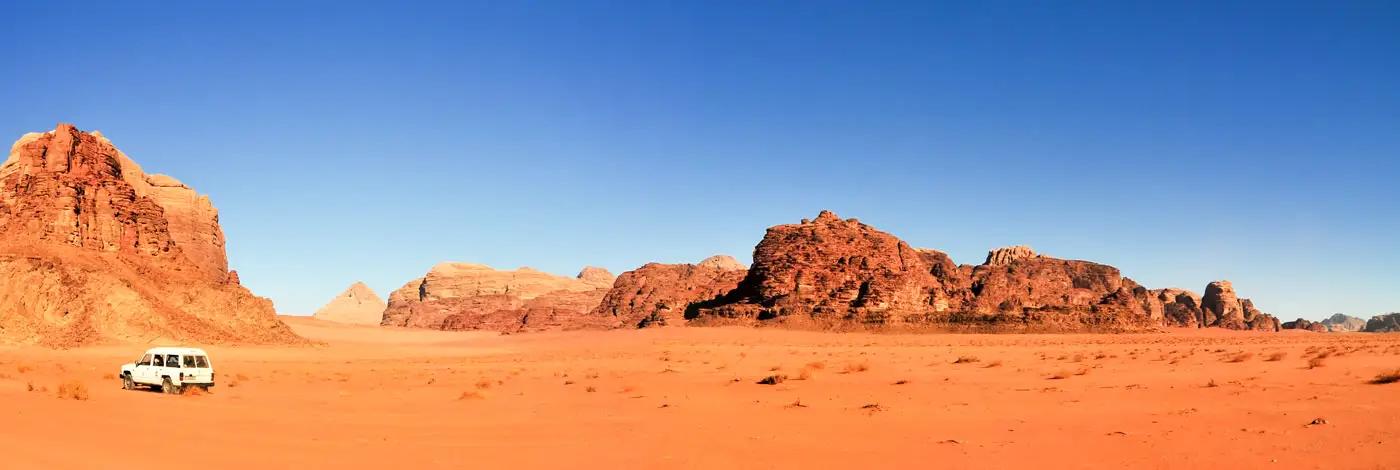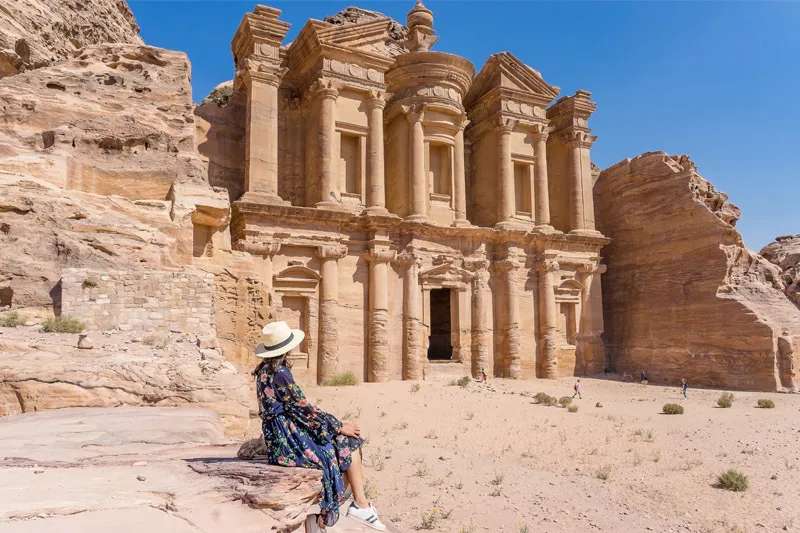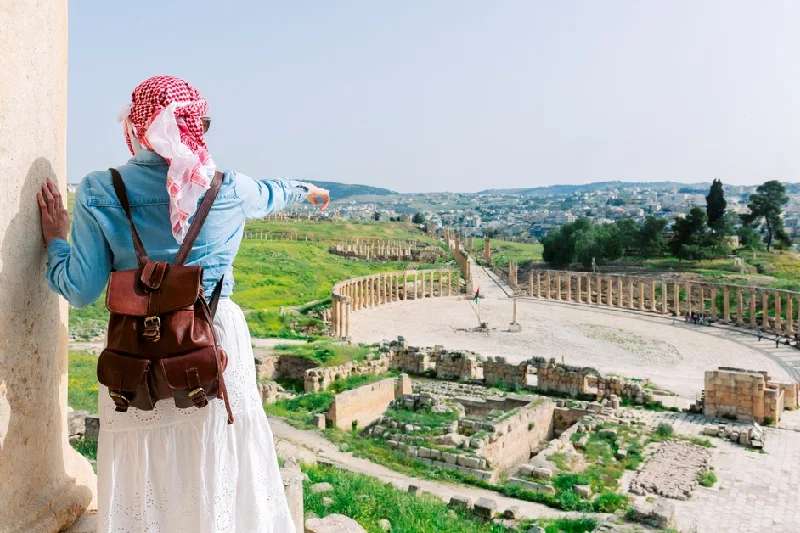
Wadi Rum Desert Guide
Wadi Rum desert, also known as the Valley of the Moon cover an entire area of 740-square- meters (280 sq mi). The region is home to a protected area and not so many villages around. Wadi Rum is currently an abode to many Bedouins properties which belong to various tribes. In southern Jordan, there is a rocky and sandy desert called Wadi Rum. Wadi Rum is among the best places to visit in Jordan because of its rich cultural heritage, magnificent red sandstone, boulders, and camels.
Things to Know Before Visiting The Wadi Rum Desert
The Language; The major language in Jordan is Arabic, but due to the tourist in the area, you see people that speak and understand the English language. Although it is more exciting you get to speak a little Arabic with the locals it is often very appreciated, earning you an even more friendly welcome. You can learn some phrases like "Thank you", and "Hello". Trust me you are going to love your stay.
Climate; The temperatures in the summer can go above 40°C in the daytime. It is usually advisable to come in lighter clothes during this period, and also have your sunglasses to protect yourself from the sun during the day. The weather can get cool and windy during the night (as it falls below 20°C). November – March, the colder months, comes with rain, and guess what, sometimes it even snows in January and February. During these periods come with your jacket to protect yourself.
Accommodation; Accommodation is a very important aspect of any tourist experience, you can enjoy the beautiful hotels with good service, get the adventurous wilderness camping experience, or even get the Bedouin Camps experience, these are camps that have been set up with a touch of the traditional desert you get to even come closer to the culture and traditions, learning about the culture and traditions in the process.
Enjoy a Camel Ride; Southern Jordan is where camels reside. Naturally, Wadi Rum is where the majority of them reside. Many people consider riding a camel in the desert to be an adventure. For everyone interested in camel trekking, the Wadi Rum is a need. You have the option to go on an hourlong, half-day, full-day, or multi-day excursion.
Rocks Bridges; A standout for adventure enthusiasts is the rock bridges. These are basically bridges that connect two larger rocks naturally. There are majorly three rock bridges, they are also available for adventurers that want to climb. Although they are different in height.
Sand Dunes; The Wadi Rum desert is divided into two sections: the first is made up of red sand, while the second is of white sand. You'll get to view a number of sizable red dunes in the first section. Typically, the highest dunes are those adjacent to rocks. To gain a fantastic view of the area, climb to the summit. You'll witness little jeeps cruising across the wide-open spaces, surrounded by enormous rocks. What a beautiful vista! You may enjoy sandboarding on the dunes because some Bedouin guides have snowboards with them.
Facts About the Wadi Rum Desert
You can visit any time of the year due to its climatic conditions, you can decide to come during mild temperature, or the best period March-May and September-November, which is also the period where you have the best population.
In Wadi Rum, watching the magnificent sunset while perched on a rock is one of the nicest parts of the day. Wadi Rum began to take on many hues as the sun fell over the undulating landscape. The sky will gradually transform from an azure blue to a soft blue, to a delicate pink, to vivid orange, to a flaming red, and ultimately to a French grey and light black, with sparkling stars shining in the background. It's a veritable feast of shifting hues.
Wadi Rum desert isn't fascinating at night but has a sparkle during the night. You get to enjoy the view of millions of stars shining in the dark sky and enjoy as the moon gives out its light to the wide landscape.
Not just offering its amazing desert landscape, The Wadi Rum is also known to be home to great cultural history, inscriptions, and amazing archaeological sites, making it one of the world's biggest open library
THE BEST TIME TO VISIT THE WADI RUM DESERT
The ideal months to go are March through May and September through November if you desire a comfortable temperature and plenty of sunshine. In terms of popularity and activity, the busiest months are March, April, September, and October. The ideal period is from October to April for hiking and mountain climbing. Enjoy the beauty of the world with friends and family.
Location, History of the Wadi Rum Desert
The Wadi rum is a valley that is made up of granite rock and sandstone in south Jordan and Aqaba to the east. Wadi Rum has been occupied by different cultures since, various cultures, including the Nabataeans, left their marks in the shape of petroglyphs, inscriptions, and temples during the prehistoric periods. In the Western region, Wadi Rum is common to British officer T. E. Lawrence, who was known to have passed through the region quite a lot of times
during the Arab Revolt in the year 1917-1918. During the early 80s although the "Seven Pillars" mentioned in Lawrence's
book have no connection to Rum, one of the rock formations in Wadi Rum, formerly known as "Jabal al-Mazmar" (The Mountain of the Plague), was given the moniker "The Seven Pillars of Wisdom". Wadi Rum was created over the course of millions of years of geological evolution. The enormous rock mountains and mesas were thrown hundreds of feet above sea level by ancient tectonic plate movement, and they were shaped over many years by sandstorms and harsh winds. Floods smoothed down the wadis (valleys), leaving behind naturally occurring rock arches, towers, and irregularly shaped boulders. Rum's first recorded human presence dates back to around 12,000 years ago, but given its proximity to Africa, it is likely that Rum was on the migratory path the first hominids made out of Africa some 1.5 million years ago.
related tours

Jordan Budget Tour
4 Days / 3 Nights
From
$ 417

Jordan Short Break
3 Days / 2 Nights
From
$ 346
